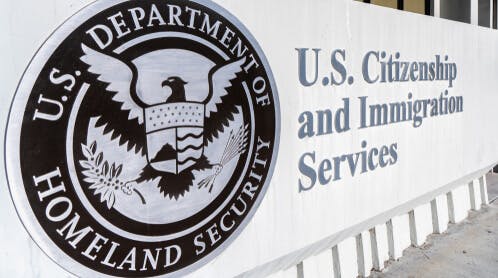Regarding their July 24 policy update, USCIS is allowing the industry to comment by August 24. EB-5 expert Suzanne Lazicki offers substantial proof that the agency’s new mandate to redeploy within a regional center’s jurisdiction creates a new “substantive requirement,” and thus needs to be removed. Regulations and precedent decisions “do not specify any regional center geography requirement divorced from job creation.” As redeployment happens after job creation, its location shouldn’t matter.The EB-5 industry has been eager for USCIS guidance on redeployment. Be careful of what you wish for… That supposed guidance came on July 24, 2020, in the form of a Policy Manual update not-so-aptly-named “Clarifying Guidance for Deployment of Capital in Employment-Based Fifth Preference (EB-5) Category.”In short, the “clarification” has drawn the ire of the industry. One particular detail of the “clarification” at the forefront of industry criticism is the mandate that redeployment occur within a regional center’s geographic jurisdiction.USCIS has defined the changes in the policy update as “consistent with precedent case decision and existing regulatory requirements within the framework of the initial bases of eligibility.” Curiously, though the agency suddenly requires that redeployment occur in a regional center’s area, it does not require that the new deployment happen with the same job creating entity or within the Targeted Employment Area (TEA.)Geographic requirement for redeployment is a new ‘substantive requirement’EB-5 business plan writer and policy expert Suzanne Lazicki takes exception to this geographic requirement for redeployment; she goes to great lengths to explain why USCIS is simply wrong on this count. First, she says this “creates a substantive requirement.” And the immigration service has declared that their update was “clarifying guidance” and “not changing any substantive requirements.”Why is it a new requirement? Lazicki actually picks apart the authorities cited in the Policy Manual update and proves that, in fact, they do not support a geographic requirement for redeployment.The authorities cited by USCIS don’t support their caseThe main authorities cited in the update are the EB-5 regulations and the precedent-setting EB-5 case Matter of Izummi. Those sources point to the reason for the original deployment of capital occurring inside a regional center’s jurisdiction: for the purpose of indirect job creation. However, Lazicki points out that as redeployment happens after job creation, there is no longer a reason for having the further deployment occur in the regional center’s area. She also reminds us that the Policy Manual does not mandate that redeployment meet any other conditions tied to the original job creation requirements.Even initial deployment can happen outside of a regional center’s areaIn fact, Lazicki even states that the initial deployment of EB-5 capital can happen outside of a regional center’s jurisdiction — so long as such deployment does not need indirect job creation.This fact causes her to declare, “Such a policy creates a requirement that not only did not previously exist for redeployment, but did not even previously exist as an unqualified requirement for the initial deployment.As an example, she says that if a Minnesota regional center creates jobs, as per the I-526 business plan, in Minnesota, and the capital is further deployed in Dallas, that later deployment does not represent a deficiency in the original petition.Lazicki maintains it is “logical and predictable”that the initial capital deployment conditions that are predicated on job creation don’t apply to redeployment after job creation requirements have been met. And, other than for job creation reasons, there are no regulations or legal precedents that require the initial deployment of capital to be within a regional center’s jurisdiction. After the evidence Lazicki provides, it’s hard to argue with her position.The new requirement is ‘unpredictable” and ‘punishes’ the industryThe EB-5 community has rightly reacted critically to this new requirement as it is “unpredictable.” In a sphere where careful business planning years in advance must be conducted, both stakeholders and investors need reliable policy they can us as a rudder for their petitions and business plans. Instead, we are receiving new policy “not theoretically grounded in the existing regulatory framework,” to use Lazicki’s language. In simple terms, no one wants to receive new retroactive requirements long after their I-526 petition ship has sailed.Congressional intent of regional center job creationThe Policy Manual update submits that “because a regional center has ‘jurisdiction over a limited geographic area,’ further deployment must occur within the regional center’s geographic area.” But this flies in the face of the fact that the Congressional intent for the regional center program — economic growth within a specific region — is taken care of by the original deployment of EB-5 capital. The job creation requirements must be met by that first deployment, as per the I-526 business plan and later proven during I-829 adjudication.Lazicki rightly points out that Congress never intended for certain immigrant investors to be required to make an economic impact above and beyond the initial job creating deployment of capital. Congress never foresaw retrogression and that certain investors would have to — by no fault of their own — have to redeploy their capital. As such an additional impact would only be required by those investors from retrogressed countries, it’s a patently unfair requirement.Multiple deployments within the same region can have benefits — but it would be a new requirementThe idea of one specific region receiving more than one deployment of investor capital is clearly of a benefit to that region, Lazicki observes. But she astutely declares that “such a requirement does not currently exist.” She concludes by reminding us — and hopefully the agency as this is a response to the call for comments — that if USCIS wants to further benefit the area of a regional center by requiring redeployment to happen there, such a new requirement shouldn’t be a “clarification” of policy but a new one created through the “proper process for substantive change.”Beyond whether or not such a change should happen, it’s obvious to all EB-5 stakeholders that any new and substantive change should only apply for those investors who have an opportunity to actually address it in their initial I-526 petition. To retroactively apply a substantive change is clearly a substantive error.A reminder that the USCIS deadline for comments regarding this redeployment policy mis-step is August 24, 2020.Read the Lazicki blog “Policy Manual comment: Redeployment and regional center geography”
Category
Politics & PolicyDate
Aug 22nd, 2020
Comments
To leave comments you must Register first
Related Articles

Politics & Policy
Read
8 Regional Centers and 22 NCEs sue government over 2020 redeployment policy guidance
Processing Times
Read
Lawyer’s advice on EB-5 redeployment: issuer’s notice to investors is critical; start process early
Politics & Policy
Read
USCIS quietly publishes redeployment Q&A

General
Read
Restructuring your NCE operating documents for redeployment

General
Read
EB-5 expert discusses how fund managers can avoid investor challenges from redeployment decisions


